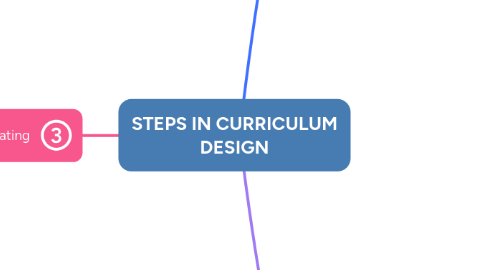
1. Evaluating
1.1. Curriculum Evaluation
1.2. The nature and purpose of evaluation
1.2.1. Evaluation determines the value of some action or program, the degree to which it helps students meet standards, and its importance.
1.2.1.1. Reflects value judgments about previous curricula and instructional designs
1.3. Assumptions behind the approaches to evaluation
1.3.1. 1. The scientific evaluation
1.3.1.1. Used by physical scientists
1.3.2. 2. The modernist approach evaluation
1.3.2.1. Engage in hermeneutic inquiry and evaluation, which reveal that the nature of life and the foci of our inquiries produce not certainty, but ambiguity, uncertainty, and risk
1.3.3. 3. The humanistic evaluation
1.3.3.1. Analyze qualitative data, such as impressions of what they observe. Describe actual incidents. Gain data by interviews and discussions with participants, students and teachers included. Analysis seeks to uncover patterns among many observations.
1.3.4. 4. The postmodern evaluation
1.4. Alternative assessment strategies
1.4.1. 1. Present students with real-life situations and conditions
1.4.2. 2. Involves teachers’ observations and inventories of students’ work with accompanying commentary regarding the judgments made
1.4.3. 3. Reports on individuals and groups within the classroom
1.5. Issues regarding fairness in curriculum evaluation
1.5.1. Evaluation must be sensitive to ethnic or racial bias.
1.5.1.1. Schools release test results not to improve programs, but to please various power groups within the community or demonstrate to legislators that an educational program is effective.
1.5.2. Evaluation must be enacted with sophisticated consideration of the evaluative process and the social milieu.
1.5.3. Evaluation is shaped by the stakeholders to whom it is reported.
1.5.4. Evaluation neglecting the manner of presentation risks having evaluation results being misused, misinterpreted, or simply ignored.
1.5.4.1. s test results are broadcast to convince various minority groups that their children are experiencing equity within the school system.
2. Planning
2.1. Component of CS in Planning
2.1.1. Cognitive
2.1.1.1. Remembering, understanding, applying, analysing, evaluating, creatin
2.1.2. Affective
2.1.2.1. Receiving, responding, valuing, organisation, characterization
2.1.3. Psychomotor
2.1.3.1. Perception, set, guided response, mechanism, complex overt response, adaptation, origination
2.2. CIPP Model
2.2.1. Context
2.2.2. Input
2.2.3. Process
2.2.4. Product
2.3. Participants in Curriculum Development
2.3.1. Teachers
2.3.1.1. Teachers occupy the central position in curriculum decision making
2.3.2. Students
2.3.2.1. Students involved in creating their curriculum can be further motivated not only to learn explicit content, but to learn implicitly that their opinions and choices matter and have educational value
2.3.3. Principals
2.3.3.1. Effective principals realize that schools must function as learning communities with close ties to the outside neighborhood
2.3.4. Curriculum Specialists
2.3.4.1. They have a broad knowledge of curriculum and expertise in creating and implementing curricula
2.3.5. Assistant (Associate) Superintendents
2.3.5.1. The assistant (associate) superintendent also helps formulate policies concerning curriculum innovation
2.3.6. Superitendents
2.3.6.1. Good superintendents inspire change and enable curricula to respond to changing demands
2.3.7. Board of Education
2.3.7.1. They enact district policies that facilitate the development and implementation of new curricular
2.3.8. Lay citizens
2.3.8.1. The relationship between communities and schools reveals much confusion and seeming con- tradictions regarding what roles laypersons should play in determining goals, programs, in- structional strategies, and standards of pupil success.
2.4. Representative curriculum designs
2.4.1. Subject-centered design
2.4.2. Learner-centered design
2.4.3. Problem-centered design
3. Implementing
3.1. Curriculum Implementation
3.1.1. The Nature of Implementation
3.1.1.1. Incrementalism
3.1.1.1.1. A belief in or advocacy of change by degrees/ gradualism
3.1.1.2. Communication
3.1.1.2.1. Communication flows more easily among persons who consider themselves equals and who are equally involved in some curriculum change
3.1.1.3. Support
3.1.1.3.1. Providing curricular innovations like effective professional in-service programs
3.1.2. Types of Change
3.1.2.1. Modernist Models
3.1.2.1.1. Overcoming-Resistance-To-Change-Model
3.1.2.1.2. Organisational-Development Model
3.1.2.1.3. Concerns-Based Adoption Model
3.1.2.1.4. Systems Model
3.1.2.2. Post-modernist Models
3.1.2.2.1. Curriculum-in-the-making
3.1.2.2.2. Myriad approach models
3.1.2.2.3. Complexity theory influenced approaches
